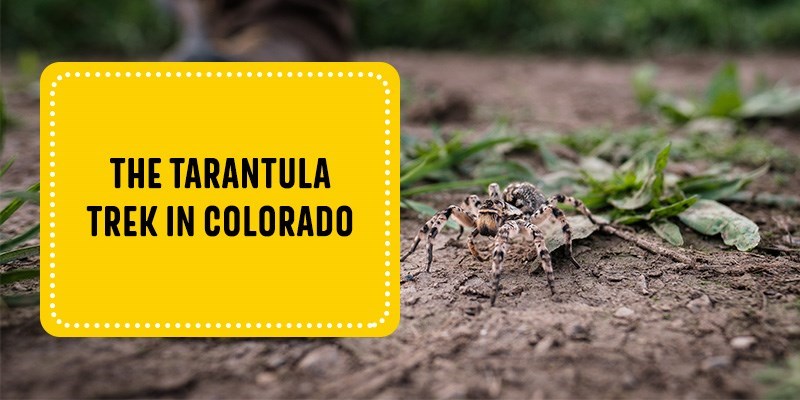Your cart is empty!
Make checkout easy by booking all your reservations at once. Add your sites from different campgrounds into your shopping cart* and then choose checkout.


For some, an annual tarantula trek, formerly known as the tarantula migration, may inspire anxiety. These arachnids are, however, fascinating. Every year the male tarantulas leave their burrows and crawl over the lands in search of “the one.” It is a phenomenon that is a growing tourist attraction, with visitors taking the journey to witness the black, furry bodies scurrying across the grassland in an annual mating ritual.
Many refer to the phenomenon as the tarantula migration; however, ecologists feel the tarantula trek is more accurate because there is no significant relocation or mass movement. Each year, males that have reached their reproductive readiness — usually takes seven to 10 years — go searching for a mate. The readiness is determined by the size of their pedipalps, a couple of appendages stemming from their heads.
These matured male tarantulas wander the grasslands in the fall for a mate's burrow. Once he finds his match, he stomps his pedipalps at the entrance. If the female is interested, she will crawl to the surface, and the male will hoist her above him so they face each other. Coupling is fast because about one-third of females eat the males after mating.
Unfortunately for the males, their days are numbered even if they are not sexually cannibalized. Most males die within a year of doing their trek and mating, making the journey a special one for them to take and you to witness.
Tarantulas are fascinating, and more scientists are dedicating time to expand their knowledge of the eight-legged creatures.
Archaeologists believe spiders, including the tarantula, are misunderstood and understudied. There is still much mystery — like how the Oklahoma browns can withstand sub-freezing temperatures in Southeast Colorado when invertebrates struggle to move at 40 degrees Fahrenheit. Scientists also have yet to determine how the spiders survive the flood season.
Public interest and activities like the La Junta Tarantula Festival are beneficial in learning more about these arachnids and the tarantula trek.
To witness this fantastic tarantula trek, prepare to visit La Junta during autumn before heavy frosts set in. The FAQ answers will help you best plan your spider-spotting adventure.
You can see the tarantula trek at the Comanche National Grassland, south of the La Junta Highway 109.
The mating season typically begins once temperatures dip around September, making this the ideal time to visit.
The mating season is between September and October or before hard freezes start. Some sightings even last until November.
Tarantulas are typically the most active an hour before sunset. The peak time to start is between 5:45 p.m. to 6 p.m. and ends within an hour. It is best to choose a day that is warmer and less windy.
The male tarantulas can travel up to 20 miles and often travel in groups searching for mates.
You might see a handful of spiders — most visitors see about two in one viewing.
There are various species of tarantulas. The Oklahoma brown tarantula is the spider most often spotted.
Some of their common predators include foxes, coyotes, snakes, birds and tarantula hawks. Tarantula hawks are particularly nasty. They are a 2-inch wasp breed that lays eggs in the tarantula's abdomen. The larvae then eat the spider as they grow. You may spot a few of these wasps lurking during the tarantula trek.
La Junta KOA Journey is the ideal place to stay at to enjoy the picturesque Southeast Colorado region. If you visit during the fall, our KOA Campground is perfect for witnessing the La Junta tarantula migration.
Plan your nature escape — book your stay today!
That doesn't mean this area has to always be empty. When you start reviewing camping options, your history will display here to help compare sites and find the best stay. You will be able to share your stay information with friends or family and save it for a later time if you have a KOA Account.
Make checkout easy by booking all your reservations at once. Add your sites from different campgrounds into your shopping cart* and then choose checkout.